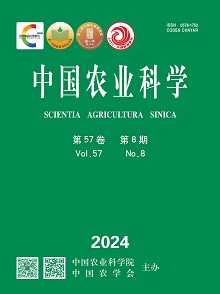【Objective】In southern China, cold waterlogged paddy fields cover an expansive area and hold considerable potential for carbon sequestration and remittance. However, the low yield and modest income derived from rice cultivation in such paddy fields have led to a high rate of abandonment. This study investigated whether conversion of cold waterlogged paddy fields to Sphagnum cultivation, an economically important plant beneficial for carbon sequestration, significantly enhances soil carbon storage while improving the income of farmers. The overall aim of this study was to evaluate the impact of Sphagnum cultivation on the carbon sequestration potential of cold waterlogged paddy soils. 【Method】Zilinshan Village, Dushan County, Qiannan Prefecture, Guizhou Province, was selected as the study site. The physicochemical properties, extracellular enzyme activities, and organic carbon content in the surface soil (0-10 cm depth) were analyzed after transformation of cold waterlogged paddy fields to Sphagnum cultivation for 1, 3, 10, and 20 years. Paddy fields growing rice were used as the control. 【Result】 (1) The years of Sphagnum cultivation altered the physicochemical properties of cold waterlogged paddy soils. Especially after Sphagnum cultivation for 10 years, the soil bulk density, mean weight diameter of aggregates, and total phenol content were increased by 16.9%, 33.8%, and 88.1%, respectively, compared with the control. (2) With an increase in years of Sphagnum cultivation, the activities of cellulose hydrolase, acid phosphatase, β-1,4-N-acetylglucosaminidase, β-1,4-glucosidase, leucine aminopeptidase, and polyphenol oxidase significantly decreased. (3) After Sphagnum cultivation for 10 years, soil organic carbon and recalcitrant organic carbon contents increased significantly, and the dissolved organic carbon and easily oxidizable carbon contents decreased significantly, the activities of cellulose hydrolase, acid phosphatase, β-1,4-N-acetylglucosaminidase, β-1,4-glucosidase, leucine aminopeptidase, and polyphenol oxidase significantly decreased after Sphagnum cultivation for 20 years. (4) The structural equation model revealed that the years of Sphagnum cultivation had maximum direct positive effect on soil organic carbon and recalcitrant organic carbon. In terms of dissolved organic carbon and easily oxidizable carbon, they directly influenced by extracellular enzyme activity to the greatest extent. Generally, soil physicochemical properties have indirect effects on the four kinds of carbon through extracellular enzyme activities,, and the years of Sphagnum cultivation indirectly influenced four types of carbon through soil physicochemical properties. 【Conclusion】 The planting of Sphagnum moss can induce changes in the soil environment, leading to a significant increase in soil organic carbon content and a reduction in extracellular enzyme activity in waterlogged paddy fields. Additionally, it promotes carbon accumulation, with long-term Sphagnum planting further enhancing this process.









